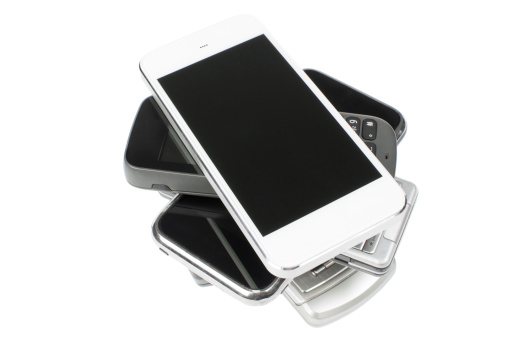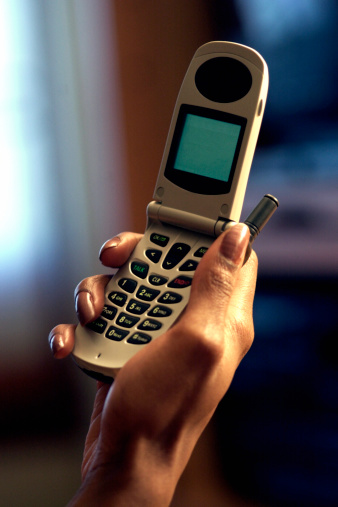Editor’s note: Njeri Wangari is marketing manager at market research firm GeoPoll, Nairobi, Kenya. This is an edited version of a post that originally appeared under the title, “Frequently asked questions in mobile research.”
The use of mobile devices as a data collection mode in research has been around for less than 10 years. The rapid growth and evolution of mobile devices from basic feature phones at the advent of mobile technology to the data-enabled devices in use today such as smartphones, tablets and Internet of things devices has integrated technology deeply into our lives at an unprecedented scale. This seamless integration has created immense opportunities for the market and social research industries.
 The proliferation of mobile phones in sub-Saharan Africa opens up new possibilities for data collection. Businesses and the international development community can now collect data via short message service (SMS), interactive voice response, surveys with a live interviewer (also known as computer-assisted telephone interviewing) and through the use of a mobile application. Gathering data via mobile phones also allows for the collection of longitudinal data – meaning data from the same person over a set amount of time. Unlike conducting panel surveys face-to-face, which is still cost prohibitive for most projects, mobile research reduces cost and time while still providing quality insights.
The proliferation of mobile phones in sub-Saharan Africa opens up new possibilities for data collection. Businesses and the international development community can now collect data via short message service (SMS), interactive voice response, surveys with a live interviewer (also known as computer-assisted telephone interviewing) and through the use of a mobile application. Gathering data via mobile phones also allows for the collection of longitudinal data – meaning data from the same person over a set amount of time. Unlike conducting panel surveys face-to-face, which is still cost prohibitive for most projects, mobile research reduces cost and time while still providing quality insights.
The development of Africa as a mobile-first continent has led to great interest in collecting panel data using mobile phones in sub-Saharan Africa. Although research agencies that previously relied on traditional data collection methods are now warming up to the idea of using mobile in research, there is still some uncertainty regarding their use in surveys either for qualitative or quantitative research.
I have encountered and answered numerous questions in various forums and meetings regarding mobile research. In this article, I’ve picked some of the most frequently posed questions to address based on our policies and industry best practices.
1. What is mobile sampling?
Access to mobile phones is becoming more widespread across all parts of the globe, and researchers are leveraging the ubiquitous nature of mobile phones to recruit survey respondents, forming a sample.
A sample is a representative number of an entire population. Sampling is the science of using a subset of a population in order to make observations of a larger population.
2. What is a mobile research panel?
This is a group of respondents recruited via a mobile phone to take part in a number of market research sessions over a period of time in order to collect longitudinal data. This data helps to paint a dynamic picture of people’s economic livelihoods and social well-being – supporting program design, implementation and evaluation. In contrast, single cross-sectional surveys or repeated cross sections cannot prospectively show how circumstances in people’s lives change over a time period.
3. How are active panels of respondents recruited via mobile?
A respondent panel can be built through multiple methods including partnerships with mobile network operators, random digit dialing and both online and face-to-face recruitment.
4. Are panelists recruited via mobile nationally representative?
Access to mobile phones is becoming more widespread across all parts of the globe, however, the mobile population does not always perfectly match the national population. To account for this researchers compare the demographic distribution of mobile survey respondents to the most recent census population estimates by age, gender and the first administrative political geographic boundaries in order to ensure that the surveys are as representative as possible of sampled populations
5. What is the optimal number of questions in a mobile survey?
In my experience, mobile respondents are often likely to drop out of a survey. To help reduce the drop-off rate it is important to have an optimal number of questions that ensure that respondents don’t get fatigued. A standard 10-to-15 question mobile survey sent via SMS, mobile Web or a mobile application is the optimal number to ensure a high response rate.
6. What is the normal response rate for mobile surveys?
As seen in the U.S. for mobile surveys, the response rates for new respondents can be around 10 percent or less. The response rates will vary by survey mode, country and project so this should be discussed in-depth to ensure the highest possible completion rate. Additional research indicates that higher or lower response rates do not necessarily dictate a more valid survey when looking at mobile surveys in emerging markets.
7. Do mobile surveys require smartphones?
Not all of them. There are mobile surveys that can be sent to respondents on feature phones via SMS or voice. Based on my experience in emerging markets, one is more likely to have a more nationally representative sample when mobile surveys are sent via SMS. This is due to the high penetration rate of feature phones compared to a smartphone or other Internet-enabled mobile devices.
8. How can data security be assured and data privacy be protected when using mobile devices?
Data privacy has become of great concern following the Cambridge Analytica scandal among other recent events. As market researchers continue to leverage the new capabilities that modern communication technology brings, concerns arise on how we can safeguard the privacy of our respondents as an industry.
This access to personal data by market research agencies is why it’s so critical that market research industry associations like ESOMAR continue to distinguish market research practices from platform practices. The market research industry abides by a set of ethics in the management of personal information. Not marketing or trying to sell services to survey respondents is critical for ongoing trust and honesty in market research.
